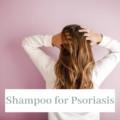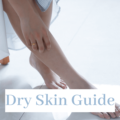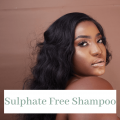Why Some Shampoo Bars Don’t Work Amidst the sea of ugly news about plastic pollution, shampoo bars are an increasingly popular way of reducing waste. By taking the water out of a shampoo, we no longer need a plastic bottle and can instead use it in bar form, just like a soap.
Amidst the sea of ugly news about plastic pollution, shampoo bars are an increasingly popular way of reducing waste. By taking the water out of a shampoo, we no longer need a plastic bottle and can instead use it in bar form, just like a soap.
The shampoo bar has other advantages too; they’re great for travelling, use less carbon in transport, don’t need preserving and typically last longer than a liquid shampoo.
But do shampoo bars work and what are they made from?
There are two different types of shampoo bar on the market today. One type is actually a soap, and if it’s a natural soap bar, it will be made by saponifying plant oils and butters. – In other words, sodium hydroxide is added to water, and oils like coconut, castor or sunflower to make a solid bar.
The other way to make a shampoo bar is to mix a solid surfactant (detergent) with active ingredients and a texturiser to make the bar hard. The most frequently used solid surfactants in shampoo bars are sodium cocoyl isethionate and sodium coco sulfate.
Which type of shampoo bar works best?
Both types of shampoo bar will clean the hair, but the after-effects can be quite different.
The soap style shampoo bar – while often a very natural product with high quality ingredients – isn’t the most ideal for the hair and scalp. Soap has an alkaline (7+) pH so can upset the acid balance of the scalp (pH 5-5.5). You feel this as a roughening of the cuticle; the hair stands more on end and can become frizzy.
Soap can also leave scum or waxy residue on the hair which leads to dullness or loss of shine. You can neutralise this and rebalance scalp pH by rinsing with apple cider vinegar after washing. But it’s a two-stage process which is more faff and in effect, you’re creating a problem to then fix it.
Soap-free shampoo bars on the other hand should be acid balanced. And as they’re (in crude terms) a dehydrated liquid shampoo, the results are usually much better for hair volume, shine and long-term scalp health. The quality of the ingredients and harshness of detergents and other additives will wary.
But all in all, shampoo bars are unlikely to work well if they’re actually soap!
 How can you tell a shampoo bar from a soap bar?
How can you tell a shampoo bar from a soap bar?
Here are a couple of examples of both. The soap bar has ingredients like ‘sodium cocoate, sodium ricinoleate’ which is respectively saponified coconut oil and saponified castor oil. The ingredients (INCI) list might also list them in pre-saponified form as ‘sodium hydroxide, cocos nucifera oil and Ricinus communis oil’. Look out for sodium cocoyl isethionate and sodium coco sulfate in an actual shampoo bar.
So, does Odylique have a shampoo bar?
The answer is not yet, but watch this space:
All Odylique products are certified organic and we’re determined to keep it that way. (It’s our guarantee to you that our products are genuinely as natural and organic as we say they are.) As yet there are no soap-free certified organic shampoo bars that are also sulphate free (which is another of our brand promises).
The certified organic shampoo bars available today contain sodium coco sulphate. This is a milder sulphate than sodium or ammonium lauryl sulphate (SLS or ALS), but still a sulphate. And the other solid detergent, sodium cocoyl isethionate, we mentioned earlier is not allowed by organic standards. – The way it’s made is not eco-friendly enough.
So, the challenge is on, and we hope to deliver soon.
What is Dandruff? How To Beat A Flaky Scalp Naturally.

You take care of your hair; you wash it regularly,…




